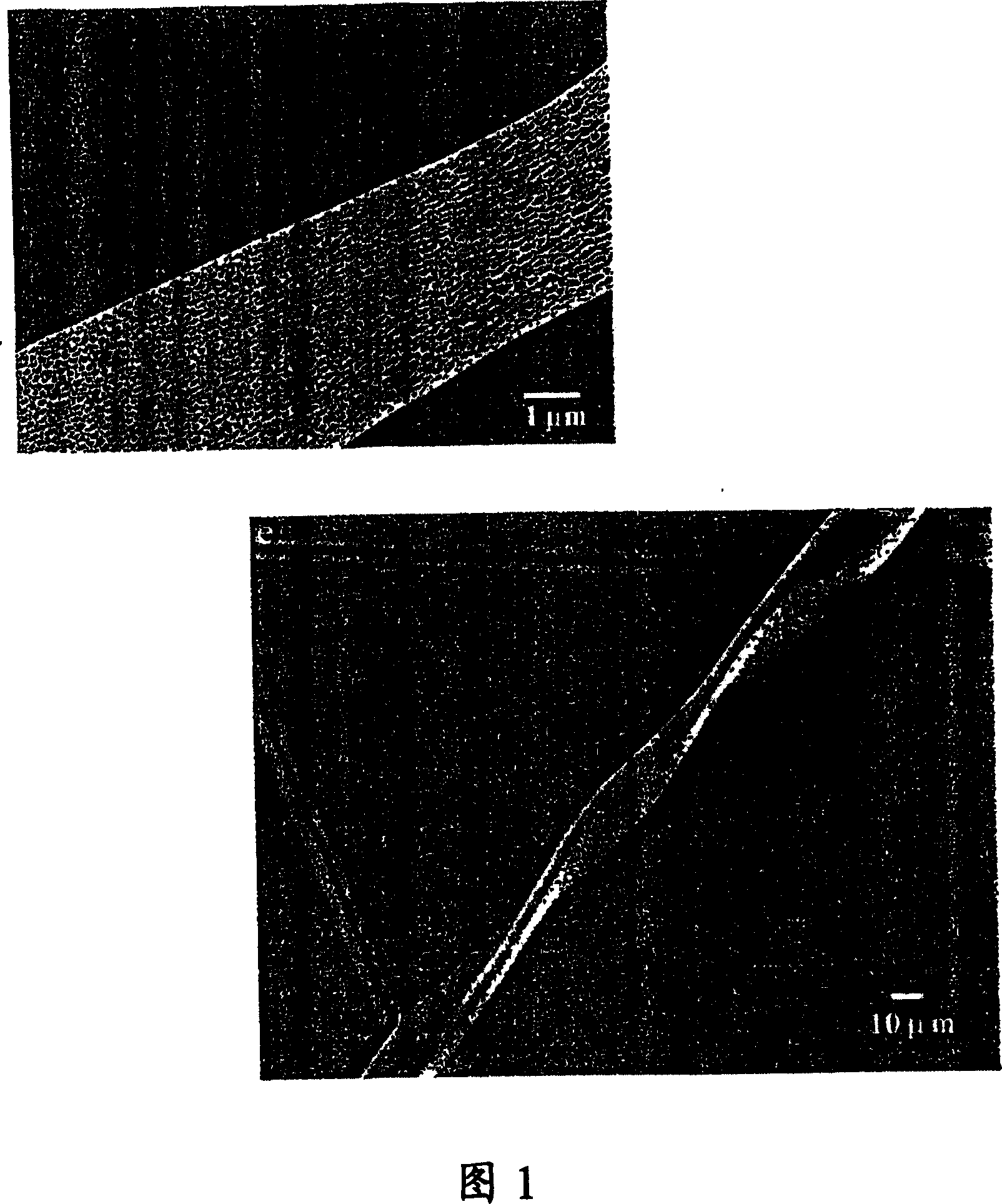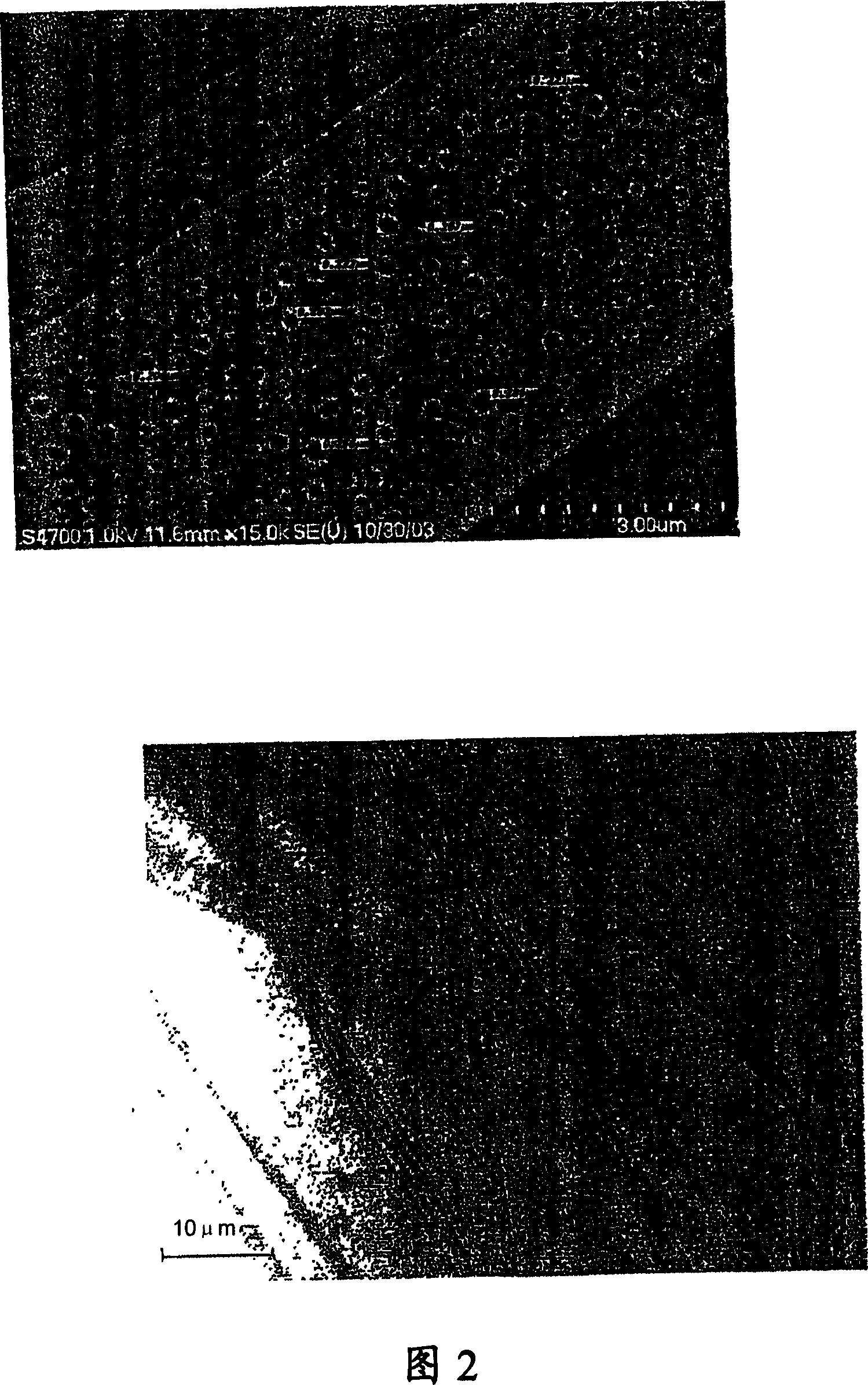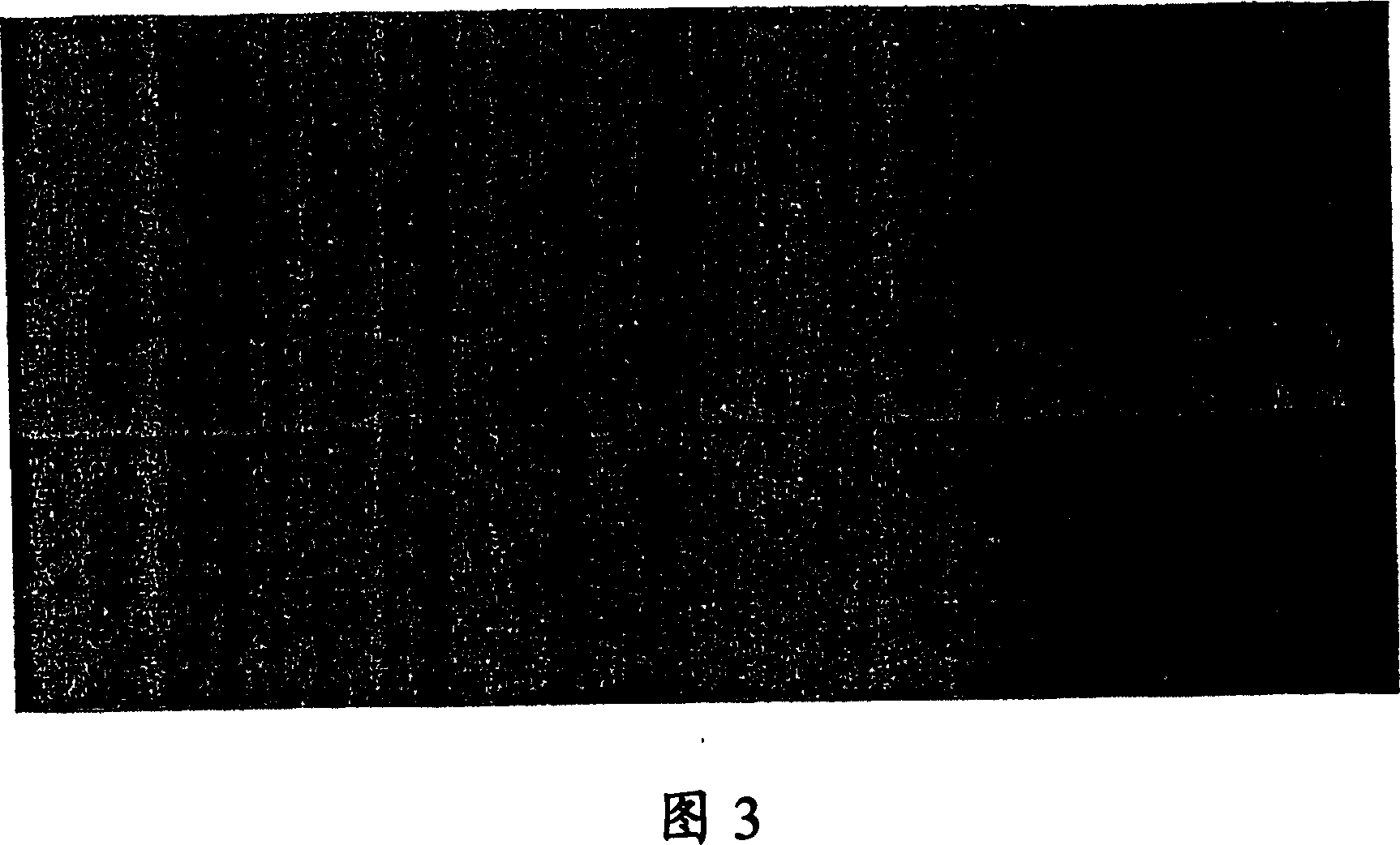Active and adaptive photochromic fibers, textiles and membranes
A photochromic and thermochromic technology, applied in fiber processing, fiber chemical characteristics, textiles and papermaking, etc., can solve the problem of reducing the quantum efficiency of materials
- Summary
- Abstract
- Description
- Claims
- Application Information
AI Technical Summary
Problems solved by technology
Method used
Image
Examples
Embodiment
[0043] Embodiments include fibers composed of a polymer matrix. In PMMA (M W =540,000) embedded in the following photochromic molecules:
[0044]
[0045] Wherein the average value of n is 7-8.
[0046] DYE3 is of the same formula as DYE1 and where n=1.
[0047] DYE1 shown above is a photochromic backbone polymer comprising 7-8 repeating units (degree of polymerization (DP) = 7-8), while DYE2 shown above is a photochromic molecule with specially selected terminal groups (Stellacci F, Bertarelli C, Toscano F, Gallazzi MC, Zerbi G, CHEM PHYS LETT 302(5-6):563-570, 1999 ("Stellacci")). DYE3 has the same chemical formula as DYE1 and where n=1.
[0048] To prepare electrospun fibers, PMMA and either DYE1 or DYE2 were dissolved in CHCl using specific concentrations as shown in Table 1. 3 middle. The resulting DYE1 (or DYE2)+PMMA solution was then electrospun using the designed treatment scheme. Specific parameters used for the first set of experiments described below are s...
PUM
| Property | Measurement | Unit |
|---|---|---|
| diameter | aaaaa | aaaaa |
| diameter | aaaaa | aaaaa |
| diameter | aaaaa | aaaaa |
Abstract
Description
Claims
Application Information
 Login to View More
Login to View More - R&D
- Intellectual Property
- Life Sciences
- Materials
- Tech Scout
- Unparalleled Data Quality
- Higher Quality Content
- 60% Fewer Hallucinations
Browse by: Latest US Patents, China's latest patents, Technical Efficacy Thesaurus, Application Domain, Technology Topic, Popular Technical Reports.
© 2025 PatSnap. All rights reserved.Legal|Privacy policy|Modern Slavery Act Transparency Statement|Sitemap|About US| Contact US: help@patsnap.com



